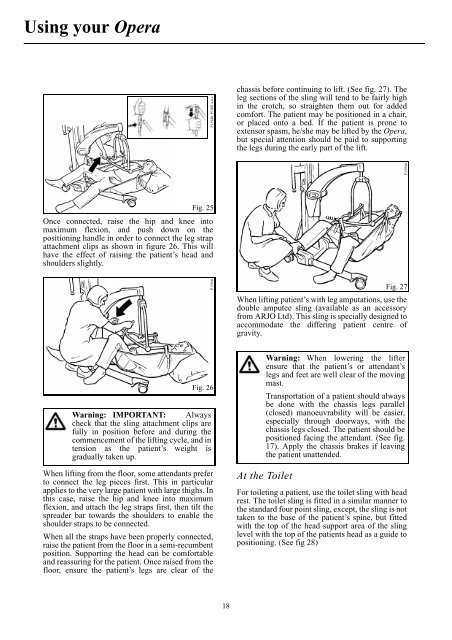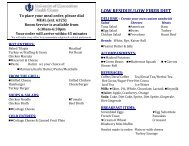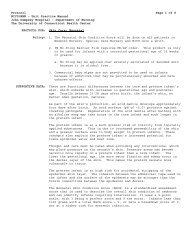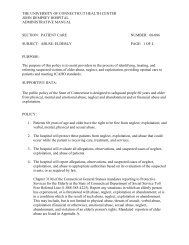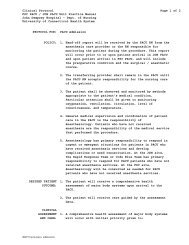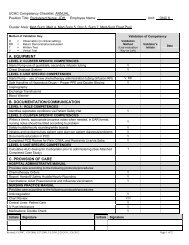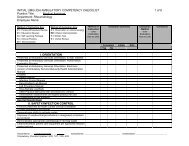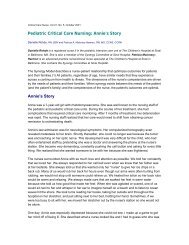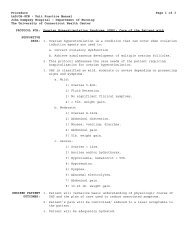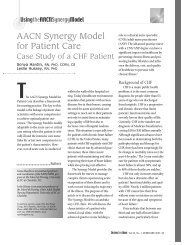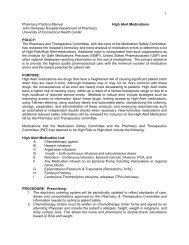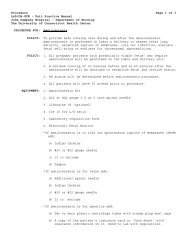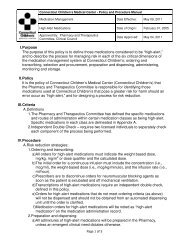You also want an ePaper? Increase the reach of your titles
YUMPU automatically turns print PDFs into web optimized ePapers that Google loves.
Using your OperaP1394b, P1002 a,b,cchassis before continuing to lift. (See fig. 27). Theleg sections <strong>of</strong> the sling will tend to be fairly highin the crotch, so straighten them out for addedcomfort. The patient may be positioned in a chair,or placed onto a bed. If the patient is prone toextensor spasm, he/she may be lifted by the Opera,but special attention should be paid to supportingthe legs during the early part <strong>of</strong> the lift.P1394dFig. 25Once connected, raise the hip and knee intomaximum flexion, and push down on thepositioning handle in order to connect the leg strapattachment clips as shown in figure 26. This willhave the effect <strong>of</strong> raising the patient’s head andshoulders slightly.P1394cFig. 27When lifting patient’s with leg amputations, use thedouble amputee sling (available as an accessoryfrom ARJO Ltd). This sling is specially designed toaccommodate the differing patient centre <strong>of</strong>gravity.Fig. 26Warning: IMPORTANT: Alwayscheck that the sling attachment clips arefully in position before and during thecommencement <strong>of</strong> the lifting cycle, and intension as the patient’s weight isgradually taken up.When lifting from the floor, some attendants preferto connect the leg pieces first. This in particularapplies to the very large patient with large thighs. Inthis case, raise the hip and knee into maximumflexion, and attach the leg straps first, then tilt thespreader bar towards the shoulders to enable theshoulder straps to be connected.When all the straps have been properly connected,raise the patient from the floor in a semi-recumbentposition. Supporting the head can be comfortableand reassuring for the patient. Once raised from thefloor, ensure the patient’s legs are clear <strong>of</strong> theWarning: When lowering the lifterensure that the patient’s or attendant’slegs and feet are well clear <strong>of</strong> the movingmast.Transportation <strong>of</strong> a patient should alwaysbe done with the chassis legs parallel(closed) manoeuvrability will be easier,especially through doorways, with thechassis legs closed. The patient should bepositioned facing the attendant. (See fig.17). Apply the chassis brakes if leavingthe patient unattended.At the ToiletFor toileting a patient, use the toilet sling with headrest. The toilet sling is fitted in a similar manner tothe standard four point sling, except, the sling is nottaken to the base <strong>of</strong> the patient’s spine, but fittedwith the top <strong>of</strong> the head support area <strong>of</strong> the slinglevel with the top <strong>of</strong> the patients head as a guide topositioning. (See fig 28)18


